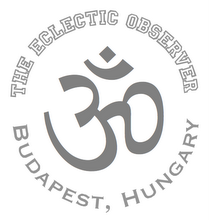
By Andrea Mihok
2007 could be considered as one of the most successful years for Hungarian fashion because Katti Zoób, one of the leading designers and brand names in Hungarian fashion, got an invitation to present her new collection at this year's London Fashion Show, held between 15 and 19 February.
Zoób’s presence alone means a lot to Hungary. That her fashion house’s haute-couture outfits on display created a great impression came as an added bonus to Hungarian fashion watchers. Zoób brought only a small crew, including two models, who demonstrated some of the clothes of the collection. The remaining personnel were responsible for the stand and acted as PR agents who talked with the buyers and the press.
The annual London fashion week is one of the most popular fashion shows in the world. More than 100 of the most famous designers from different countries, together with the newly graduated students from the London St. Martin School, were invited to present their new seasonal collections in the building of the London Natural Science Museum. The entire fashion world was focused on this event, as it has become the normative show for next seasonal cloth style.
The British Fashion Council gives the best designer award after checking and matching all the clothes seen during the week and the ceremony is held at the end of the fashion week. Invitations to the show were hard to come by, and those lucky enough to attend were subject to surprise visits by members of the Council, who would ask invitees to build sample stands, in order to decide who really deserved to take a part in the show.
“It was not an easy job,” said David Valker, a creative assistant at Katti Zoób, “to set up a stand among the famous designers and at the same time to create something special and unique, which equally represents the brand and the collection, and with which we could stand out from the crowd.”
To increase pressure even further, the place they were given to set up their stand was near a Danish designer who was working in the same manner regarding the design, though the style and the materials used were worlds apart – the British Fashion Council is conscious at every level.
In the end, thanks to the creativity of the team and the quality of the fabrics they used, the Hungarian stand became one the most wanted stands at the show. As one satisfied customer reported, “The Hungarian stand was among the four stands for which it was worthwhile to come and see the show”.



